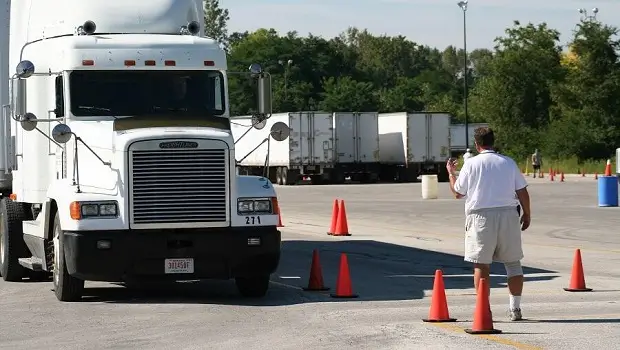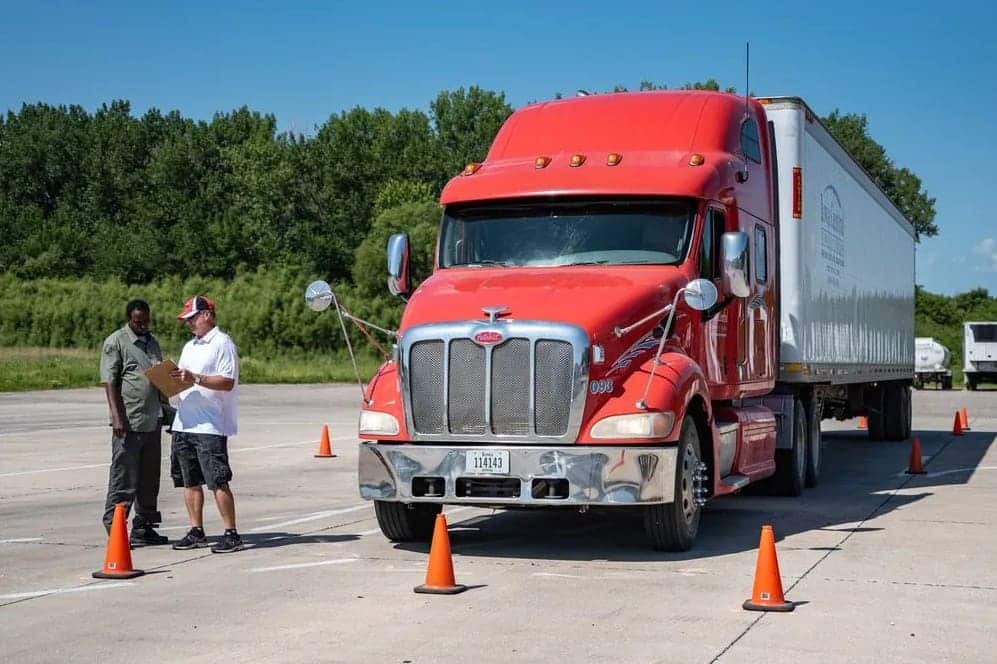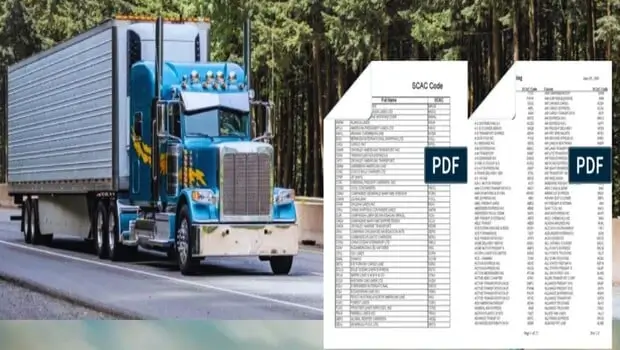

April 20, 2023

2101 Views

6 min read
How Long is Truck Driving School
Page Contents
One of the main questions for aspiring truck drivers is: How long is truck driving school? While it may seem like an intimidating process, it doesn’t have to be. Getting a professional truck driving license doesn’t take long with the right preparation and research.
So let’s take a closer look at how long truck driving school is and the steps you can take to get licensed quickly.
Preparing for Enrolling in Truck Driving School
Before diving headfirst into a truck driving school, do your research and ensure you understand the process. This means finding out the requirements for a truck driving school and if the school you’re interested in is certified. It also means understanding how long truck driving school takes and what specific training is included.
Qualifications to Be a Truck Driver
Before enrolling in truck driving school, ensure you meet all the qualifications for becoming a professional truck driver.

Some requirements for becoming a truck driver may vary by state or even company, but generally, you must adhere to the following:
Age Limit: You must be at least 18 years of age to drive a truck in interstate commerce.
Driver’s License: A valid driver’s license is usually required to enroll in truck driving school.
Medical Requirements: You must pass a physical examination, including vision and hearing tests.
Criminal History: Generally, you cannot have any major violations or suspensions on your driving record or criminal history to be a truck driver.
Drug Testing: You must pass a drug test before employment and may also have to pass random drug tests while employed as a truck driver. You should have no prior conviction for a drug-related
Good health: Truck drivers need to be physically and mentally fit enough to handle the demands of the job, which can include long hours on the road, irregular sleeping patterns, and a variety of weather conditions.
Truckers should remain alert while operating their vehicles to ensure safety on the road.
Mental Capacity: Although it isn’t a hard-and-fast requirement, having the right attitude is essential for any truck driver. Truck driving can be a lonely job, and drivers need the independence and motivation to work long hours on their own. You must be able to read maps, follow directions, and make quick decisions while behind the wheel.
In addition to these qualifications, you will also need to be capable of understanding the rules and regulations related to truck driving. Truckers must abide by federal and state laws while transporting cargo on public roads, so they must understand their responsibility for driving safely and legally.
You may also need additional qualifications to drive hazardous materials or a double- or triple-axle trailer. Needless to say, all truck drivers should possess excellent communication skills, basic math knowledge, and good customer service skills.
What Information is included on an MVR?

FOR COMPREHENSIVE FLEET
MANAGEMENT SOLUTIONS
How Long Does Truck Driving School Take?
The length of a truck driving school depends on various factors, including the type of training and level of certification you’re seeking. Generally speaking, an entry-level truck driving program can take anywhere from three weeks to six months.
The coursework may include classroom instruction, hands-on training, and, of course, behind-the-wheel practice. In addition to the actual driving lessons, students will also be required to attend additional classes related to safety, customer service, and other topics.
CDL License Class
The first step in truck driving school is to take the Commercial Driver’s License (CDL) class. This program generally lasts about three weeks and covers the basics of truck driving. Students will learn about the various types of trucks, their components, and how to operate them safely.
The CDL class also covers topics such as basic driving maneuvers, interstate regulations, and safety standards. To pass the class, you must have a passing score on both the written and skills tests.
Required Driving Time
In most states, truck driving schools require a minimum number of driving hours to receive your CDL. Depending on the state, this can range from 40 to 80 hours of behind-the-wheel training.
Typically, these driving hours will include both solo and supervised practice. During this time, you will learn how to drive in different conditions, such as at night, in bad weather and heavy traffic.
Classroom Instruction
This part of the program covers transportation regulations, cargo loading and unloading procedures, customer service, hazardous materials handling, vehicle maintenance, and other related topics.
Classroom instruction may include lectures, video training, and hands-on activities. This is a great way to learn the basics of truck driving in a safe and controlled environment.

Third-party CDL Administration
Many truck driving schools now use third-party companies to administer their CDL exams. This allows students to take their tests conveniently without waiting for a traditional testing center.
The advantages of taking the CDL exam through a third-party provider include shorter wait times, more cost-effective testing fees, and immediate access to results.
Full or Part-time Attendance
Truck driving schools usually offer two attendance options: full-time and part-time. Full-time attendance allows you to complete the program in a shorter time, while part-time gives you more flexibility to attend classes that fit your schedule.
No matter what type of attendance you choose, be sure to plan and allocate enough time for the coursework so that you can get your CDL on time.
Type of Truck
The duration of your truck driving school also depends on the type of truck you are driving. Smaller trucks may require less time to complete the program, while larger trucks, such as 18-wheelers and semi-trucks, may require additional training.
If you plan on driving a larger truck, you should be prepared to spend more time in the program and take more classes.
CDL Endorsements
You may need additional certifications or endorsements like Hazmat (hazardous materials), tanker, doubles or triples, and air brake certifications.

These additional endorsements and certifications typically require additional classroom training and practice hours, which can add to the overall length of your truck driving school.
At FleetCare, we understand that each student has different needs and goals regarding truck driving school. We provide personalized guidance and assistance to ensure you have all the necessary information and resources to get your commercial driver’s license. Contact us today to find out more about our services.
Sign up for Exclusive Trucking Tips
Test







